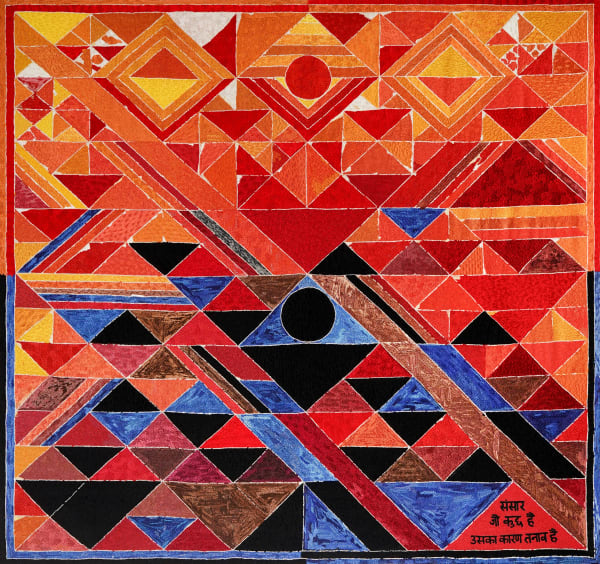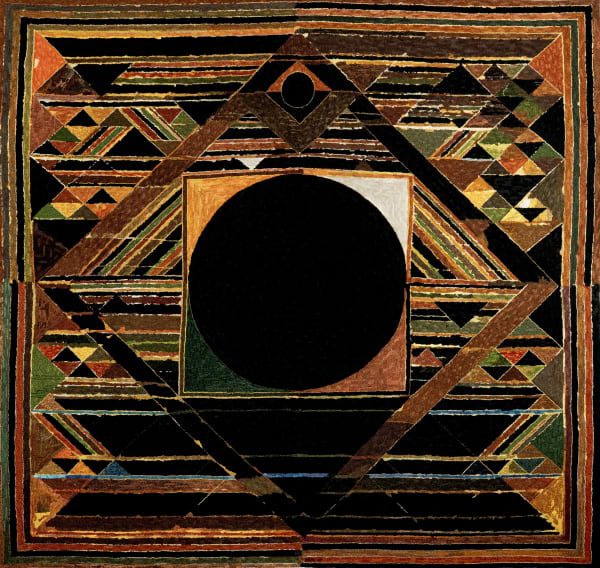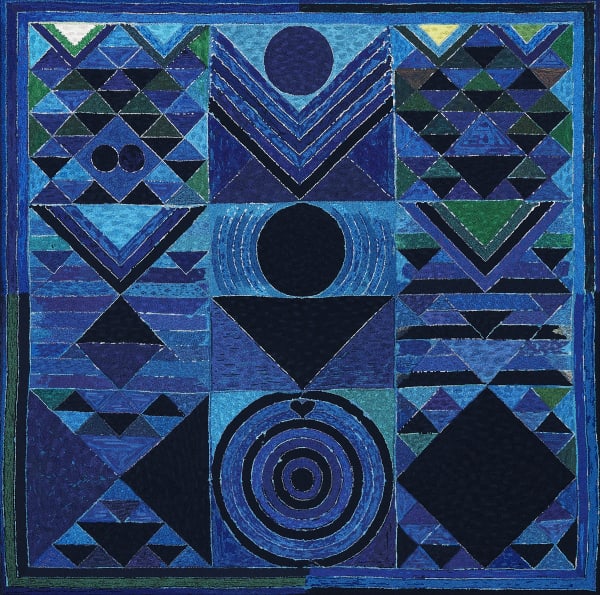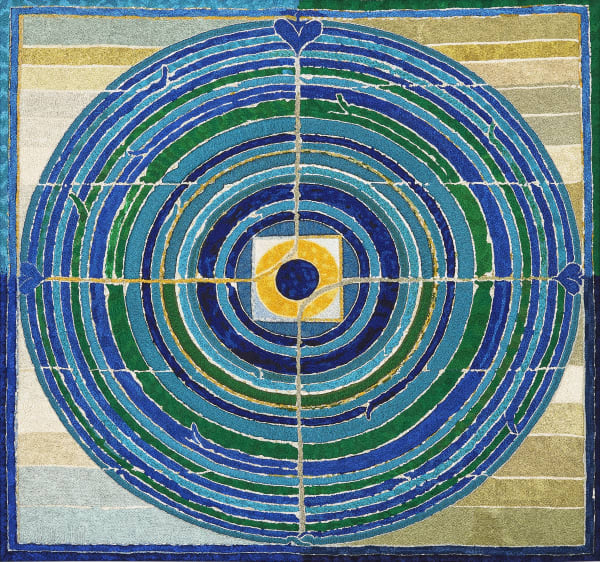"The geometric forms are embroidered with a selection of special techniques that represent the mastery of the craftsmanship, beautifully capture the strong play of colours and the rhythm of the elements of the nature."
OVERVIEW
(1922 – 2016 BABARIA, MADHYA PRADESH)
S.H. Raza is celebrated for his profound exploration of Indian philosophy and spirituality, deeply rooted in his connection with nature. His work particularly from the mid-70s uses the black bindu, a dot, symbolizing the idea of creation and the essence of life found in nature, which encompasses the cosmic and spiritual energy in the universe. Using a vibrant colour palette and geometrical motifs the artist depicts the rich Indian landscape that engages his philosophical interconnectedness with humans and the natural world alike.







